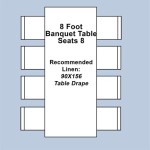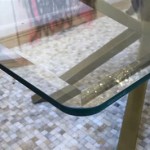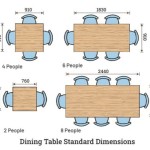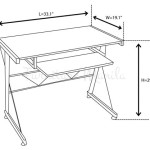Modern Contemporary Dining Table and Chairs: A Comprehensive Guide
The modern contemporary dining table and chairs represent a distinct blend of functionality, aesthetics, and innovation in furniture design. This particular style emphasizes clean lines, minimalist forms, and the incorporation of new materials, diverging from traditional embellishments and intricate details. Selecting the appropriate modern contemporary dining set requires careful consideration of various factors, ranging from spatial dimensions and material suitability to aesthetic preferences and budgetary constraints. This article provides a detailed exploration of the key aspects involved in choosing and integrating modern contemporary dining table and chairs into a dining space.
Understanding the Characteristics of Modern Contemporary Design
Modern contemporary design, often incorrectly conflated with modern design, encompasses a broader range of styles that are relevant and current. It’s inherently dynamic, adapting to prevailing trends and incorporating new technological advancements. Unlike modern design, which has a fixed historical context, modern contemporary emphasizes the present. Key characteristics include:
Clean Lines and Geometric Shapes: This is a defining feature, visible in the table's structure and the chair's silhouette. Tables often feature rectangular or square tops with streamlined legs, while chairs exhibit simple, unadorned frames. Curves are often incorporated sparingly, and usually in subtle ways.
Minimalist Aesthetic: Ornamentation is consciously avoided. The focus is on the inherent beauty of the materials and the functionality of the design. Decorative elements are kept to a minimum, ensuring a streamlined and uncluttered appearance. The design promotes simplicity and a sense of spaciousness.
Neutral Color Palettes: While vibrant colors can be incorporated as accents, the core palette typically consists of neutral tones such as white, black, gray, and beige. These colors provide a versatile backdrop that complements various interior design schemes, allowing other elements within the room to stand out. Natural wood tones are also commonly used to bring warmth and organic texture into the space.
Emphasis on Natural Light: Modern contemporary spaces are designed to maximize natural light. Large windows, skylights, and strategically placed artificial lighting fixtures contribute to a bright and airy atmosphere. The dining table and chairs should ideally be positioned to take advantage of natural light sources, enhancing their visual appeal and functionality.
Use of Innovative Materials: Modern contemporary design readily embraces new materials and manufacturing techniques. This can include tempered glass, metal alloys, engineered wood products, and molded plastics. These materials offer unique properties in terms of durability, sustainability, and aesthetic versatility, allowing for the creation of innovative and visually striking furniture pieces.
Key Considerations for Selecting a Modern Contemporary Dining Table
Choosing the right dining table requires careful assessment of several factors to ensure it meets both aesthetic and practical needs. The size of the dining space, the number of people typically accommodated, and the overall design style of the home all play significant roles in the selection process.
Size and Shape: The size of the dining table must be proportionate to the dimensions of the dining room. A table that is too large can overwhelm the space, making it feel cramped and uncomfortable. Conversely, a table that is too small may not adequately accommodate the intended number of diners. Consider the available space around the table, allowing sufficient room for chairs to be pulled out and for people to move freely. Common shapes include rectangular, square, round, and oval. Rectangular tables are well-suited for larger gatherings, while round tables promote conversation and are ideal for smaller spaces.
Material Choice: The material of the dining table impacts its durability, maintenance requirements, and overall aesthetic. Wood is a classic choice, offering warmth and natural beauty. Options range from hardwood such as oak and maple to softer woods like pine. Glass tabletops provide a sleek and modern look, are easy to clean, but can be prone to fingerprints and scratches. Metal tables are durable and often feature minimalist designs, making them suitable for industrial-inspired interiors. Engineered wood products, such as MDF and particleboard, offer affordable alternatives to solid wood, but may not be as durable. Stone tops like marble and quartz create a luxurious feel but can be heavy and require specialized care. Each material brings a different texture and visual appeal, and the selection should complement the overall design scheme.
Base Design: The base of the dining table significantly contributes to its overall appearance. Common base designs include pedestal bases, trestle bases, and four-leg bases. Pedestal bases feature a central support, providing ample legroom. Trestle bases consist of two or more vertical supports connected by a horizontal beam, offering a sturdy and visually interesting design. Four-leg bases are the most traditional and versatile, suitable for various table shapes and sizes. The base design should not only be visually appealing but also provide adequate stability and support for the tabletop.
Extendable Tables: For those who frequently entertain guests, an extendable dining table can be a practical choice. These tables can be easily expanded to accommodate larger groups and then reduced in size when not needed. Extension mechanisms vary, ranging from drop-leaf extensions to butterfly extensions. Extendable tables offer flexibility and adaptability, making them ideal for homes with limited space or varying dining needs.
Selecting Modern Contemporary Dining Chairs: Comfort and Style
Dining chairs are just as important as the table itself because they influence comfort during meals and contributes significantly to the aesthetic appeal of the dining area. The design, materials, and ergonomics of the chairs should be carefully considered to ensure a cohesive and comfortable dining experience.
Ergonomics and Comfort: The primary function of a dining chair is to provide comfortable seating. Consider the height of the chair in relation to the table, ensuring sufficient legroom and a comfortable posture. The seat depth and back support should also be adequate for extended periods of sitting. Some chairs feature contoured seats and lumbar support, enhancing comfort. Upholstered chairs offer additional cushioning, while chairs with armrests provide added support. It is advisable to try out different chair styles to determine which best suits individual preferences.
Material Compatibility: The material of the dining chairs should complement the material of the dining table. If the table is made of wood, chairs with wooden frames or legs can create a cohesive look. Metal chairs can provide a contrasting element, adding visual interest to the space. Upholstered chairs can introduce texture and color, softening the overall aesthetic. Consider the durability and maintenance requirements of the chair materials. Leather and vinyl are easy to clean, while fabric upholstery may require more frequent cleaning and stain protection. The seat material (wood, plastic, or fabric) also affects comfort. Consider the ease of cleaning. Some modern chairs use molded plastic or metal for easy cleanup.
Style Consistency: The style of the dining chairs should align with the overall design style of the dining room. Modern contemporary chairs often feature clean lines, minimalist designs, and geometric shapes. Choose chairs that complement the table's design and contribute to a cohesive aesthetic. Consider the chair's profile – the shape and outline of the chair. The chair profile should complement the table and the overall aesthetic of the dining space. Mismatched chairs can be used to create an eclectic and personalized look, but this requires careful planning to ensure a harmonious balance. Choose chairs that reflect a unified design theme.
Stackability and Storage: If space is a concern, consider stackable dining chairs. These chairs can be easily stacked and stored when not in use, freeing up valuable floor space. Stackable chairs are particularly useful for smaller dining areas or for those who frequently host large gatherings. Look for stackable chairs that are lightweight and easy to handle.
Harmonizing the Dining Set with the Existing Space
Integrating a modern contemporary dining table and chairs into an existing space requires a holistic approach, considering the surrounding décor, color scheme, and architectural elements. A well-integrated dining set enhances the overall aesthetic and creates a cohesive and inviting atmosphere.
Color Coordination: The color of the dining table and chairs should complement the existing color scheme of the dining room. If the walls are painted in neutral tones, consider adding pops of color with the chairs or accessories. Conversely, if the walls are brightly colored, opt for neutral-toned furniture to avoid overwhelming the space. Consider incorporating accent colors that are already present in the room to create a unified look. It is important to consider the color temperature – warm colors tend to create a cozy atmosphere, while cool colors evoke a sense of calmness and spaciousness.
Lighting Design: The lighting in the dining room plays a crucial role in creating the desired ambiance. Modern contemporary spaces often feature layered lighting, combining ambient lighting, task lighting, and accent lighting. A statement pendant light or chandelier above the dining table can serve as a focal point, while recessed lighting and wall sconces provide ambient illumination. Task lighting, such as adjustable spotlights, can be used to highlight specific areas or artwork. Ensure that the lighting is dimmable to create a range of moods, from bright and energizing to soft and intimate.
Accessories and Décor: Accessories and décor can add personality and character to the dining room. Consider adding a rug under the dining table to define the space and add warmth. Table linens, such as tablecloths and placemats, can introduce color and texture. Centerpieces, such as floral arrangements or sculptural objects, can serve as focal points. Wall art, mirrors, and plants can further enhance the aesthetic appeal of the dining room. Avoid cluttering the space with too many accessories, as this can detract from the minimalist aesthetic of modern contemporary design.

Modern Contemporary Dining Room Furniture Designs

Contemporary Dining Table Designs For Modern Homes Designcafe

Modern Contemporary Dining Rooms Uncover Timeless And Fierce Design
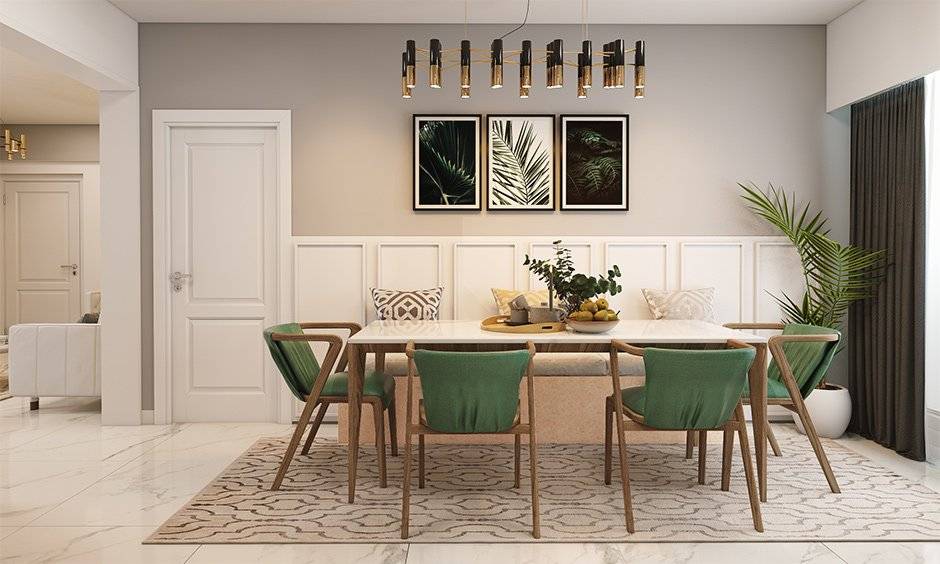
Mid Century Modern Dining Table Designs For You Designcafe

Modern Dining Table And Chairs Set Design Casa Furnishing

Modern Dining Table Designs For Your Home Designcafe

Modern Dining Room Furniture Contemporary Service 360

Mineral Gray Color Contemporary Dining Set Caravana Furniture
:max_bytes(150000):strip_icc()/kcharlottephoto_65415160_2137503296378445_4610184262046700606_n-84854448583c4fa38be2c4c2fb6dd588.jpg?strip=all)
27 Modern Dining Room Ideas And Designs

10 Best Modern Dining Chairs For Your Astonishing Home Design
Related Posts

